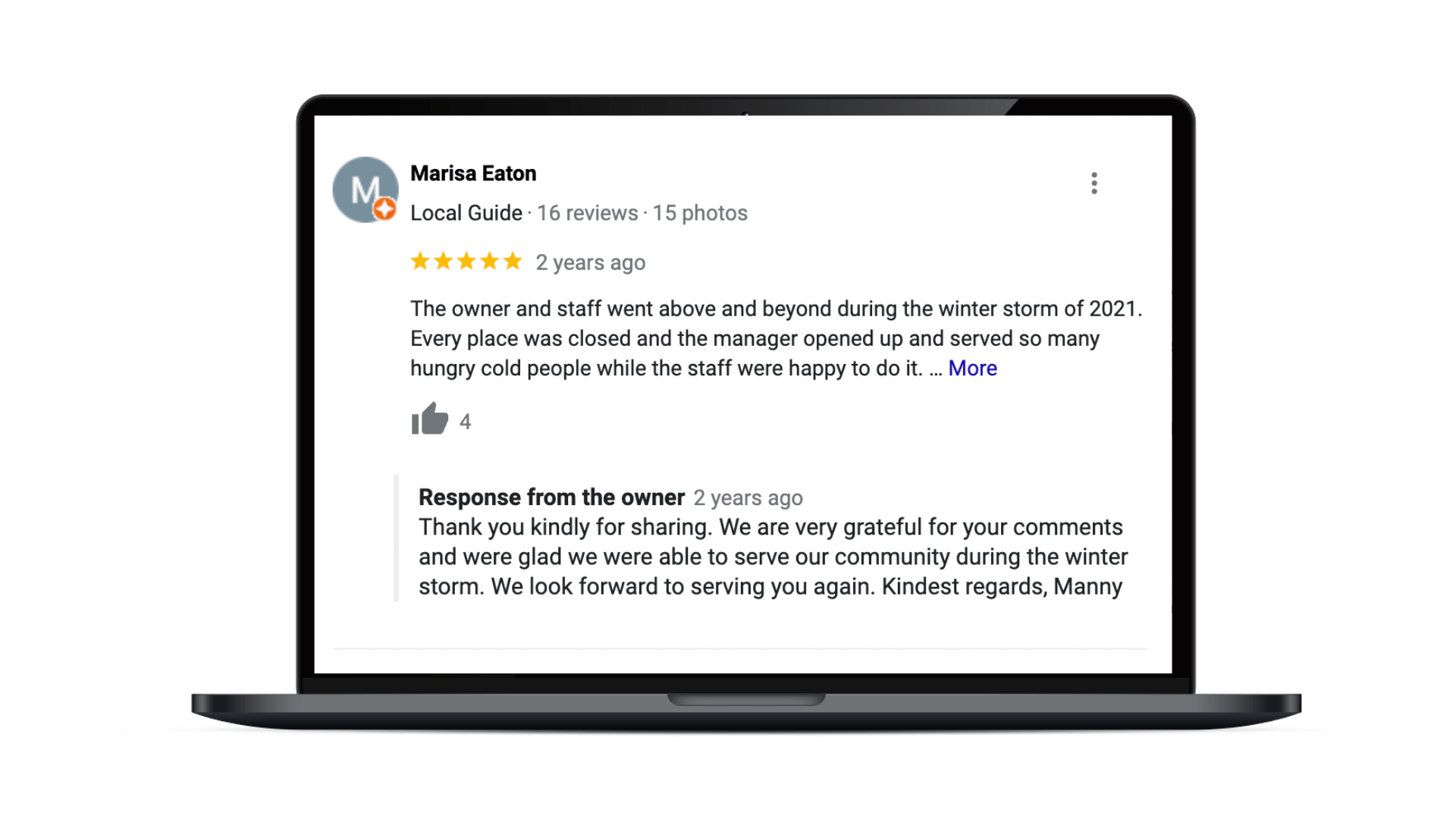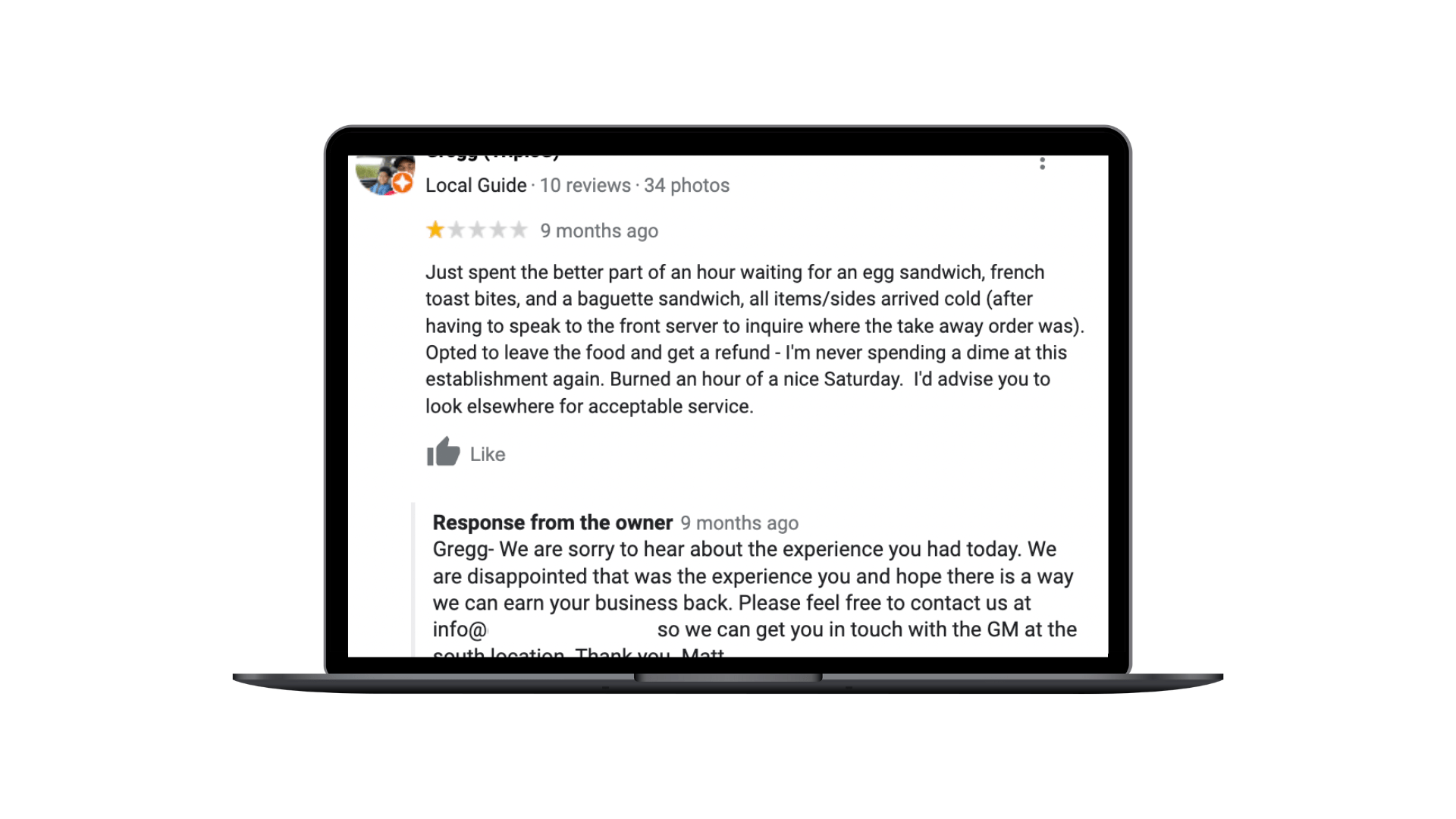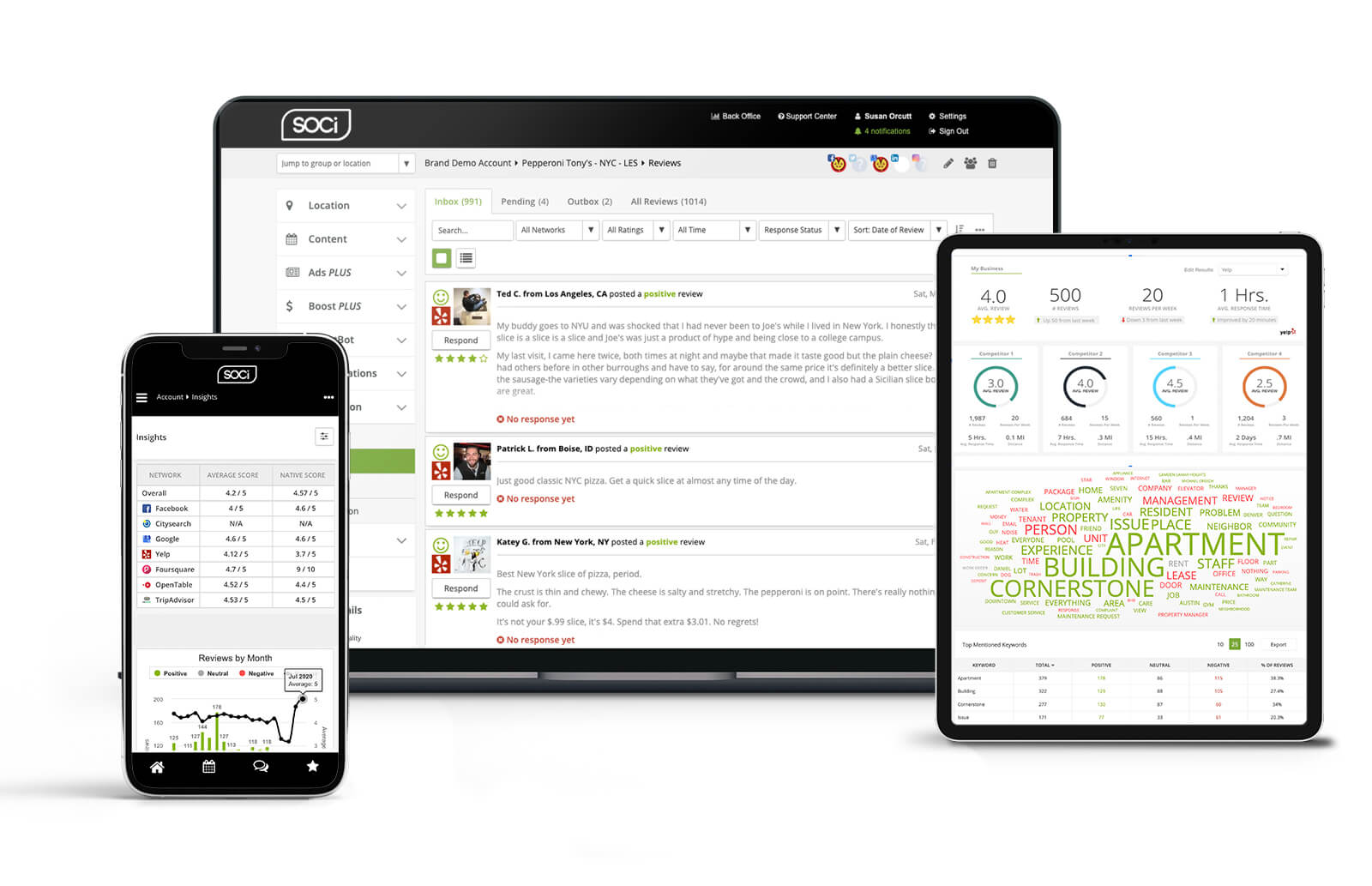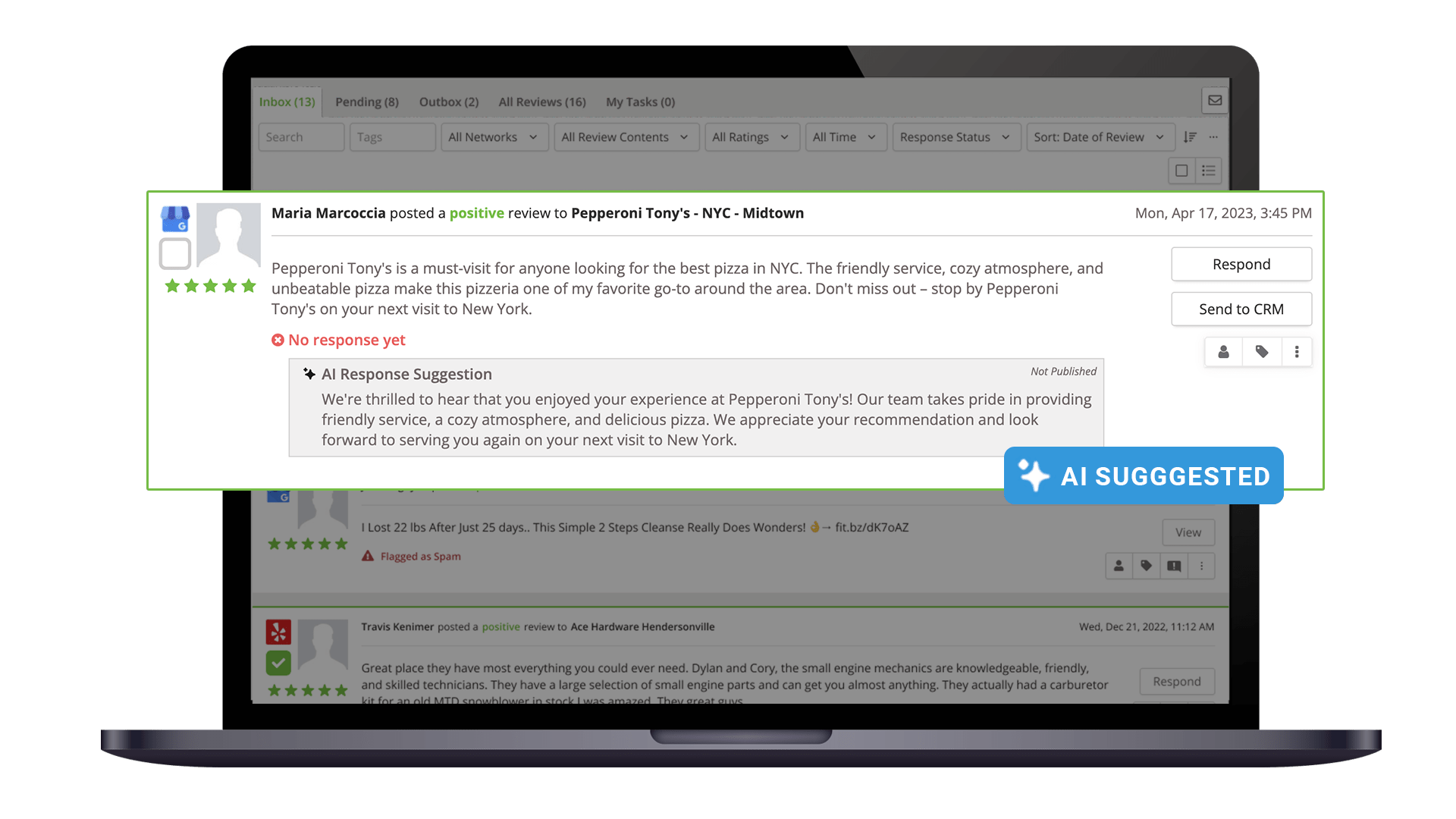Your Comprehensive Guide to Review Management
As a multi-location marketer, developing a strategy to manage reviews across business locations is essential. The data speaks for itself.
Ninety-eight percent of consumers feel that reviews are an essential resource when making a purchase decision. Additionally, more than half of consumers have passed up a business due to their local ratings and reviews. If your business isn’t managing reviews effectively, you may be negatively impacting your bottom line.
Within this blog, we’ll dive into what review management is and seven tactics your business can follow to manage reviews successfully while sharing tips that will set you apart from competitors.
What is Review Management?
Review management is the process of monitoring customer reviews posted about your business. Through review management, your business should monitor and read reviews, respond to them, and analyze the content and sentiment found in the reviews.
Now that you understand review management, let’s dive into seven ways to effectively manage your business’s reviews.
1. Determine Where Customers Are Leaving Reviews
Before you can get started managing your reviews, it’s essential to understand where your business is receiving reviews. Typically, you’ll find reviews on your website and local listing and social platforms.
Once you have a list of all the places customers can leave reviews, you must ensure those channels are updated with your latest business information. For instance, do your local Google Business Profiles have the most recent and accurate business information? What about your social channels?
You can often find reviews on platforms such as Google, Yelp, Facebook, your website, and beyond. Below you’ll find an example of a review left on Google.
Ensuring that your business’s local profiles on each platform and your website are updated and accurate will provide a positive customer experience (CX) and prevent any possible confusion.
2. Monitor Reviews Across Platforms
After you determine where reviews are being left about your business, you can begin monitoring them. As a multi-location business with 100s to 1,000s of locations, it’s essential that you monitor reviews across each location.
As you would expect, monitoring reviews includes tracking every review your business receives across each review platform. Finding a solution that can help you do this at scale is critical. We’ll dive more into that later in this blog.
While monitoring reviews is important, your business shouldn’t stop there. A comprehensive review management strategy includes responding to reviews, considering feedback, and beyond!
3. Develop a Review Response Strategy
Responding to reviews is non-negotiable. Research has found that consumers tend to read ten reviews before deciding on a business. Of those who read reviews, 97 percent said they pay attention to the responses business owners and operators write.
When responding to reviews, your business should prioritize the negative reviews first, followed by responding to positive reviews. You should also respond to reviews in reverse chronological order — prioritizing the most recent reviews.
Review responses should be timely and personalized, addressing the content of the customer’s review. A quick “Thank you, [Name]!” can go a long way for reviews that don’t include much text.
In order to avoid confusion, your multi-location business must determine who is responsible for monitoring and responding to reviews. Will local teams manage this process, or will corporate have some oversight? This responsibility is important to determine ahead of time so your review responses don’t fall through the cracks.
Responding to reviews shows customers that you’re taking the time out of your busy day to acknowledge their feedback. This will help reinforce a positive CX to loyal customers while simultaneously attracting new ones.
Download our Multi-Location Marketer’s Guide to Online Reputation Management for additional tips on responding to reviews.
4. Take Negative Conversations Offline
Forty percent of consumers expect a reply no more than 24 hours after posting a negative review. As mentioned previously, your business should prioritize negative reviews first.
When responding to a negative review, you should acknowledge the customer’s negative experience at face value while explaining what your business will do to prevent this from happening again, if possible.
Remember, if you say you will do something differently, you must follow through! A customer may come back to see if you made the change.
If the conversation continues in a negative direction, taking it offline is essential. You can provide the customer with an email address or phone number they can use to get additional support, as seen in the example below.
Similarly, if you offer a customer a refund or coupon for a future visit, do that offline too. You don’t want other customers to get the idea that if they leave a negative review, they’ll receive something in return.
While negative reviews are never fun to receive, it’s important to remember that they happen for all businesses! The important part is how your business responds to them.
5. Encourage More Customer Reviews
After successfully creating a process for monitoring and responding to reviews, you can start thinking about ways to generate more reviews. SOCi data found that for every ten new reviews earned, the conversion of Google profiles improves by 2.8 percent. Maintaining a steady influx of reviews should be a priority as a multi-location marketer.
Your brand can gain more reviews by:
- Adding a call-to-action (CTA) on both paper and digital receipts for customers to evaluate their experience
- Utilizing social media to encourage feedback from loyal customers
- Engaging with current reviews to show customers you value their feedback
- Making it easily accessible to leave reviews through links on your website, social channels, and beyond
- Leveraging surveys and chatbots as a tool for review collection
While many review platforms have solicitation guidelines, the tactics mentioned above are acceptable ways to gather more reviews. Our blog on review solicitation provides more detail.
6. Analyze Review Sentiment
While monitoring reviews and your overall star rating will give you some insight into how customers generally feel about your business, it’s crucial to analyze overall sentiment. To do so, your business can leverage a reputation management platform that provides insight into the sentiment of your reviews.
This will allow you to identify and manage emerging sentiments from online reviews while analyzing shifts in local reputation over time. Analyzing customer sentiment weekly, monthly, or quarterly is crucial to prevent new negative reviews that could have been avoided if you had paid attention to sentiment trends and made quick changes.
7. Make Optimizations Based on Feedback
Finally, the last step in managing reviews is making improvements based on the feedback you’ve received. Analyzing your sentiment should make this easy! For instance, did you receive a lot of mentions about the wait time at your restaurant? Are you a property management company that saw “maintenance” mentioned multiple times in your reviews?
Understanding what pain points customers are having at your business is vital. More importantly, you must take the time to address and solve those pain points.
That’s not to say that every negative review calls for a complete change, but if certain themes continue to appear in reviews, they’re worth addressing.
As mentioned a few times throughout this blog, improving your customer experience is critical, and making improvements based on what you’ve seen in your reviews will help do so.
Improve Your Review Management Strategy Today
Now that you understand what it takes to manage reviews effectively, it’s time to start. Again, managing reviews across various platforms and 100s or 1,000s of business locations can seem daunting — that’s where SOCi comes in!
SOCi’s streamlined reputation management software allows you to give local marketing teams the power to respond to reviews and your corporate team the ability to maintain oversight through the aggregation of all reviews into one dashboard.
The tool integrates with major review sites like Google, Facebook, and Yelp. It also tracks sentiment, identifies emerging trends, monitors shifts over time, and analyzes local competitors. These capabilities give you deep reputation insights.
Additionally, we’re excited to share our integration with OpenAI into SOCi’s award-winning review response management tool to enable instant intelligent responses to online reviews.
SOCi’s reputation management software also utilizes advanced machine learning algorithms to provide fast and accurate real-time responses to customer reviews.
The integration with GPT-4 enables the tool to respond promptly to reviews in a personalized, engaging, and highly relevant way to each customer, helping you streamline the review management process and increase customer satisfaction.
Request a demo today for additional insight into how SOCi can help you manage reviews better and more efficiently!





